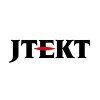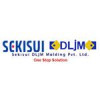Filter interviews by
Ahresty India Production Supervisor Interview Questions and Answers
Ahresty India Production Supervisor Interview Experiences
1 interview found
(3 Questions)
- Q1. Tell Somthing about yourself
- Ans.
Experienced production supervisor with a strong background in managing teams and optimizing processes.
Over 5 years of experience in supervising production lines
Skilled in implementing lean manufacturing principles to improve efficiency
Proven track record of meeting production targets and deadlines
Excellent communication and leadership skills
Certified in Six Sigma for process improvement
- Q2. What is tolerance
- Ans.
Tolerance refers to the acceptable range of variation in a process or product without affecting its quality.
Tolerance is the maximum allowable deviation from a specified dimension or value.
It ensures that products meet quality standards even with minor variations.
For example, in manufacturing, a part may have a tolerance of +/- 0.1mm for its dimensions.
Tolerance can also refer to the ability to withstand or endure some
- Q3. Are you able to work,Where temp is high
- Ans.
Yes, I am able to work in high temperatures.
I have experience working in environments with high temperatures.
I am physically fit and able to handle the heat.
I am aware of the necessary precautions to take in high temperature conditions.
I am comfortable wearing appropriate protective gear in hot conditions.
Interview Preparation Tips
Top trending discussions






Interview questions from similar companies

Production Supervisor Interview Questions & Answers
Maxxis Rubberposted on 19 Oct 2023

(3 Questions)
- Q1. What is the 7QC ?
- Ans.
7QC stands for Seven Quality Control Tools, which are a set of techniques used for quality improvement in production processes.
The 7QC include tools such as Pareto charts, cause-and-effect diagrams, scatter diagrams, control charts, histograms, check sheets, and flowcharts.
These tools help identify and solve quality-related issues in production processes.
For example, a Pareto chart can help prioritize the most signific...
- Q2. What is the TPM?
- Ans.
TPM stands for Total Productive Maintenance, a proactive approach to maintenance that aims to maximize equipment effectiveness.
TPM involves empowering operators to take ownership of equipment maintenance
Focuses on preventing breakdowns and improving overall equipment efficiency
Incorporates principles such as autonomous maintenance, planned maintenance, and continuous improvement
Example: Implementing daily equipment che...
- Q3. What is the TPM target?
- Ans.
TPM target stands for Total Productive Maintenance target, which is a goal set to maximize the efficiency and effectiveness of production equipment.
TPM target is a goal set to minimize equipment downtime and maximize productivity.
It involves proactive maintenance practices to prevent breakdowns and improve overall equipment effectiveness.
Examples of TPM targets include reducing unplanned downtime by 20% or increasing e...

I applied via Naukri.com and was interviewed in Oct 2020. There were 5 interview rounds.
Interview Questionnaire
1 Question
- Q1. About my previous work
Interview Preparation Tips

Production Engineer Interview Questions & Answers
Jtekt Sona Automotive Indiaposted on 10 Sep 2022
I applied via Naukri.com and was interviewed in Aug 2022. There were 2 interview rounds.

(5 Questions)
- Q1. What's is 5s and clero
- Ans.
5S is a methodology for workplace organization and standardization. Clero is not a recognized term in production engineering.
5S stands for Sort, Set in Order, Shine, Standardize, and Sustain
It aims to improve efficiency, safety, and quality by organizing and standardizing the workplace
Examples of 5S implementation include color-coding tools, labeling storage areas, and creating visual work instructions
Clero is not a re...
- Q2. What's is tpm and tpm piller
- Ans.
TPM stands for Total Productive Maintenance, a system that aims to maximize equipment effectiveness and minimize downtime.
TPM is a maintenance strategy that involves all employees in the organization
TPM focuses on improving equipment reliability, reducing downtime, and increasing productivity
TPM Pillar refers to the eight key areas of focus in TPM implementation, including autonomous maintenance, planned maintenance, a...
- Q3. About your self and what do you work
- Q4. What do you safty and you know ppe
- Q5. What is this type of fire
- Ans.
The question is incomplete. Please provide more context.
Please provide more information about the fire in question.
Is it a chemical fire, electrical fire, or a fire caused by combustible materials?
Each type of fire requires a different approach for extinguishing it.
Interview Preparation Tips
- 7Qc
- TPM Activities
- Production Planning
- Rejection analysis
- KPI Analysis

Junior Engineer Interview Questions & Answers
Jtekt Sona Automotive Indiaposted on 4 Dec 2023
I applied via Approached by Company and was interviewed before Dec 2022. There were 3 interview rounds.

Practice is the most advocated rool of aptitude test
Assignment is compusry solve all problems
Interview Preparation Tips

Junior Engineer Interview Questions & Answers
Seoyon E-hwa Automotiveposted on 24 Feb 2025
(1 Question)
- Q1. SAP and ERP based interview

Junior Engineer Interview Questions & Answers
Seoyon E-hwa Automotiveposted on 18 Feb 2024
I applied via Recruitment Consulltant and was interviewed before Feb 2023. There was 1 interview round.
(1 Question)
- Q1. Basic plastic design consideration
Interview Preparation Tips

Production Engineer Interview Questions & Answers
Seoyon E-hwa Automotiveposted on 26 Oct 2024
I applied via Approached by Company and was interviewed in Sep 2024. There was 1 interview round.
(1 Question)
- Q1. Machine related questions Ans Injections moulding horizontal type machine handle

I applied via Job Portal and was interviewed before Sep 2022. There were 3 interview rounds.
(6 Questions)
- Q1. Troubleshooting in injection molding Machine?
- Ans.
Troubleshooting in injection molding machine involves identifying and resolving issues to ensure smooth operation.
Check for any blockages in the machine's nozzle or mold
Inspect the temperature settings to ensure they are correct for the material being used
Verify that the injection pressure and speed are set appropriately
Examine the cooling system to ensure it is functioning properly
Monitor the cycle time and adjust as
- Q2. Knowledge of plastic Materials & machine process?
- Q3. Basic Knowledge of Ms-Office & Excel
- Q4. Knowledge of Mould loading and unloading
- Q5. Knowledge of Defects & How it Contol ?
- Ans.
Defects in engineering refer to imperfections or flaws in materials or structures. Controlling defects involves identifying, analyzing, and implementing measures to prevent or minimize them.
Identify different types of defects such as cracks, voids, inclusions, and porosity.
Use non-destructive testing methods like ultrasonic testing, radiography, and magnetic particle inspection to detect defects.
Implement quality contr...
- Q6. Some Theoretical Questions like Back pressure,LD Ratio,Mould Parts,Type Of mould,
(2 Questions)
- Q1. Why we Hire Uh at Our Company?
- Q2. Introduce yourself?
(2 Questions)
- Q1. How You Investigate Accident?
- Ans.
I investigate accidents by collecting evidence, interviewing witnesses, analyzing data, and reconstructing the events.
Collect evidence from the accident scene
Interview witnesses to gather information
Analyze data such as CCTV footage or vehicle black box recordings
Reconstruct the events leading up to the accident
Consult with experts if needed, such as accident reconstruction specialists
- Q2. Describe PPE kit And Why we Use while Working on Machine
- Ans.
PPE kit is a set of protective equipment worn to minimize exposure to hazards while working on machines.
PPE kit includes items like gloves, goggles, helmets, masks, and coveralls.
It is used to protect the wearer from physical, electrical, chemical, and biological hazards.
PPE kit is essential to prevent injuries, illnesses, and accidents in the workplace.
For example, wearing gloves can protect hands from cuts and burns
Interview Preparation Tips
- Injection molding Machine Proces

Production Engineer Interview Questions & Answers
Sekisui Dljm Moldingposted on 16 Jan 2024
I applied via Naukri.com and was interviewed in Dec 2023. There was 1 interview round.
(3 Questions)
- Q1. How to handle shift ,processor , defects ,trouble shooting, so many questions
- Q2. Defets related questions and how to trouble shooting ,process
- Q3. Technical questions
Ahresty India Interview FAQs
Tell us how to improve this page.
Ahresty India Interviews By Designations
- Ahresty India Diploma Trainee Engineer Interview Questions
- Ahresty India new Product Development Engineer Interview Questions
- Ahresty India Intern Interview Questions
- Ahresty India Assistant Engineer Interview Questions
- Ahresty India Production Supervisor Interview Questions
- Ahresty India Quality Engineer Interview Questions
- Ahresty India Graduate Trainee Interview Questions
- Ahresty India Executive Engineer Interview Questions
- Show more
Interview Questions for Popular Designations
- Production Engineer Interview Questions
- Production Manager Interview Questions
- Production Officer Interview Questions
- Executive Production Interview Questions
- Production Interview Questions
- Senior Production Engineer Interview Questions
- Production Chemist Interview Questions
- Production Operator Interview Questions
- Show more
Ahresty India Production Supervisor Interview Process
based on 1 interview
Interview experience
Interview Questions from Similar Companies
Fast track your campus placements
|
Junior Engineer
96
salaries
| ₹2 L/yr - ₹3.5 L/yr |
|
Assistant Engineer
94
salaries
| ₹3 L/yr - ₹4.6 L/yr |
|
Engineer
35
salaries
| ₹3.5 L/yr - ₹6.6 L/yr |
|
Supervisor Trainee
34
salaries
| ₹1.9 L/yr - ₹2.8 L/yr |
|
Senior Engineer
23
salaries
| ₹4.6 L/yr - ₹8.7 L/yr |

Caparo Engineering India

Marelli

Enco Engineers Combine

Seoyon E-hwa Automotive
- Home >
- Interviews >
- Ahresty India Interview Questions >
- Ahresty India Production Supervisor Interview Questions












